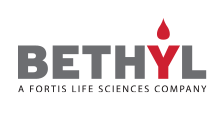Rabbit anti-RALY IHC Antibody

Catalog #
RALY
Human
,Mouse
IHC
Rabbit
Polyclonal
Whole IgG
Between 256 and 306
IgG
Unconjugated
Antigen Affinity Purified
Product Details
Mouse,
Human
Monkey
Human
2 - 8 °C
1 year from date of receipt
The agouti (a) locus includes the mouse agouti gene that regulates coat color in mice by controlling the relative amount and distribution of yellow and black pigment in the coat hairs. A mutation in the agouti locus, lethal yellow (Ay), results in an all-yellow coat color along with a number of dominant pleiotropic effects such as obesity, diabetes, tumor susceptibility, and embryonic lethality in homozygotes. Molecular analysis of the Ay transcript revealed that the Ay transcript includes the coding region of the a gene but also included novel sequence. The novel sequence was found to originate from a 5’-noncoding exon of a gene that was named Raly, because it had the potential to encode an hnRNP protein that is associated with lethal yellow.
Alternate Names
autoantigen p542; heterogeneous nuclear ribonucleoprotein C-like 2; hnRNP associated with lethal yellow protein homolog; hnRNP core protein C-like 2; HNRPCL2; P542; RNA binding protein, autoantigenic (hnRNP-associated with lethal yellow homolog); RNA-binding protein (autoantigenic); RNA-binding protein (autoantigenic, hnRNP-associated with lethal yellow); RNA-binding protein RalY
Applications

